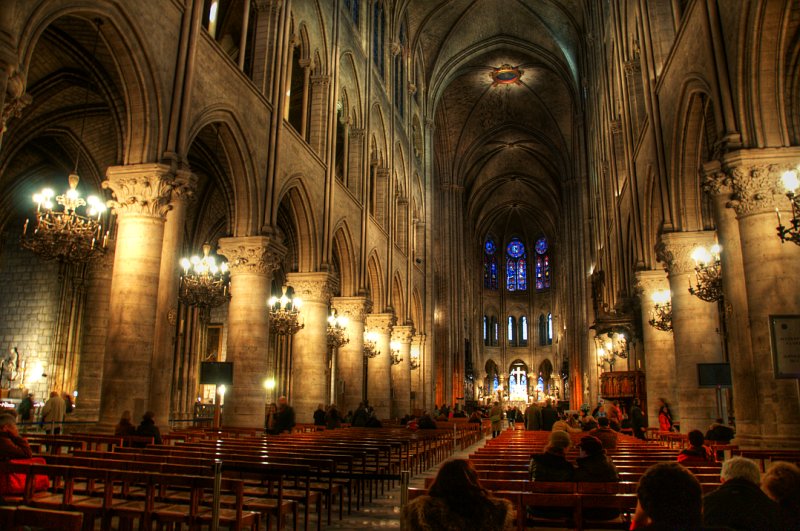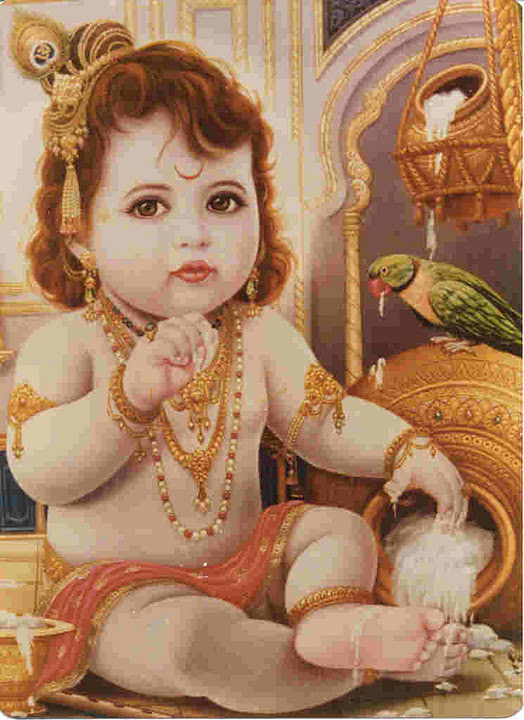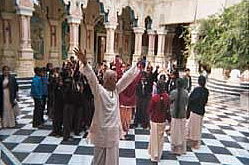The most fearful thing is to live without fear. It is out of fear that we willingly place ourselves under the power of others. It is out of fear that we relinquish our natural rights, and it is out of fear that we surrender our hopes and dreams.
I believe that fear was at the basis of my decision to join ISKCON. As a youth I asked the perennial questions: What is this world? How am I? How would I live? An organization such as ISKCON came along not only with the answers to the deep questions of life, but also a structured plan for how to live. “Here are your friends, the devotees. Stay away from bad people, the non-devotees. Here is food, here is shelter, here is your wife, and here is how you will raise your children.” Everything was provided and the motto was simple: Chant Hare Krishna and be happy. All I had to do was surrender to “God” and guru. The formula was seductive in its simplicity and it echoed the youthful idealism of Walden, “Simple living and high thinking.” So in the name of spirituality and devotion, the loftiest of goals, I allowed myself to be taken over. Looking back on this, I know that fear was at the root of my “surrender”. In fact, it was not surrender to God at all, it was avoidance of personal responsibility and it was done out of fear.
My particular experience with fear was not unique. It just appeared unique because it involved a religious “cult,” but many people, especially in youth, or in other vulnerable times of their lives, willingly place themselves under control. Some do it in political movements, some do it with secular ideologies, some do it in the military, and others do it in personal relationships. Out of fear we bind ourself in different ways. I simply did it in a religious context.
But my fall into submission was not all bad. I learned many things and I came out stronger. I learned about the nature of freedom and personal responsibility and I learned that I was not happy living under domination. The exchange of personal control for security was not worth it. I learned about the indomitability of the human spirit. There is no happiness without freedom.
During my devotional career there were a few watershed moments of utter rebellion, times when I said to hell with my fears, and I took a few steps out of the box. One such moment occurred at the Los Angeles Hare Krishna community. I recall needing a battery for my car, so I asked for extra money, but I was told that devotees did not need cars and that I should sell my car and give the money to Krishna. At that moment I realized just how far I had gone in my loss of personal control and I decided to leave the community and return to school. Like a chick in the egg this was my first “peck” at the shell that enveloped my world. But I did so with fear and guilt. It had been hammered into my head that I could not be a devotee outside of the community and that I had no existence outside of my society of devotees. I pained over and over what to do, whether to sell my car and submit, or to leave the community. In the end I thought, “If this was what it meant to be a devotee then I did not want be a devotee.” I would return to Canada and go to school even if it meant the loss of my spirituality. This was a defining moment that took tremendous courage because outside of the community I had no income, no friends and no help other than my parents. Looking back now it seems incredible. I lived this way? The interesting thing, however, is that when I finally did leave I did not lose my spirituality or my connection to God. In fact it grew. Through this experience I learned more about myself, especially about my fears.
There is a saying, “If you really want to grow, get married, start your own business and have children.” I did all three, in spades! When I got married I had no absolutely no experience with women and I certainly had no experience in business, and to make matters even worse my guru had told me never to use contraception, and in those days I was an obedient disciple. Any one of these things, I could probably handle, but together these were my undoing. Once I had left ISKCON in Los Angeles and returned to school in Canada I was on my own. I had no support from my spiritual home; I was in for the ride of my life. Fear ruled my life!
I swear biology is the most awesome and force in the universe. Did you know that before the advent of the birth control pill, 50% of all marriages in this country were the result of an unplanned pregnancy! “Doing the right thing” used to be the rule and not the exception. Having our first child, Vrindavan, even though he arrived almost nine months to the day after marriage, was not a problem. This was expected. I could handle the first child, even if it was a little quick. And then Shesha, our second child, born 16 months later was also not a too much of a problem. As a good “protestant” I was raised with the two child rule, and even though the two children were a little close together, I could live with it. But without contraception this was just the start; I had used up my children quota within the first two and a half years of marriage. Lactation is a poor substitute for contraception and so after that each successive child was a further descent into an abyss of fear. I can remember Kama Nagari and I walking in a mall in Belleville Canada with Shesha in a stroller, Vrindavan walking beside me and one in more in the “oven,” and both Shesha and Vrindavan were still in diapers. Today, I laugh at the thought of this, but at the time I was looking at fear personified. Eventually I even came to have a hatred of my guru for making such a cruel demand on his disciple, no contraception, not even rhythm was allowed. The result, of course, was ten children!
While I would never ask any disciple to follow such a practice, I can say that for me at least the result has been positive. I have nine great children and I am wealthy, but you can only imagine my despair as my burden increased: three children, four children, five children, six children… . It was indescribable, but there comes a moment in desperation, a point of total hopelessness, where you are so crushed that you either die and fade away or somehow reach within and find strengths that you never knew existed and you become revitalized. I died and was reborn, and not only did I survive, I have prospered. In my hopelessness and despair I moved beyond fear. The Brian died and the Shukavak was born. I learned that I have resources within that I would never otherwise have known and no longer am I possessed by the fears that once owned me. It has been a gradual process, but my whole attitude toward life, wealth and happiness has been changing in the last fifteen years. The fear that I once had to look people in the face and smile is gone. The fear that I once had to taste life is gone. The fear to say I love you is gone. The dichotomy that I once perceived between the world and spirituality has evaporated. I no longer fear for my spiritual life. I no longer fear to live without fear.




 At a recent temple board meeting one of our members made an interesting statement. This was during a discussion on the priest’s role in different temple meetings, some of which are held exclusively amongst ladies.
At a recent temple board meeting one of our members made an interesting statement. This was during a discussion on the priest’s role in different temple meetings, some of which are held exclusively amongst ladies. Sometimes I see bumper stickers that read, “Jesus said it, it’s in the Bible, I accept it.” A statement of this type reflects many people’s attitude towards religious authority in this country.
Sometimes I see bumper stickers that read, “Jesus said it, it’s in the Bible, I accept it.” A statement of this type reflects many people’s attitude towards religious authority in this country.




